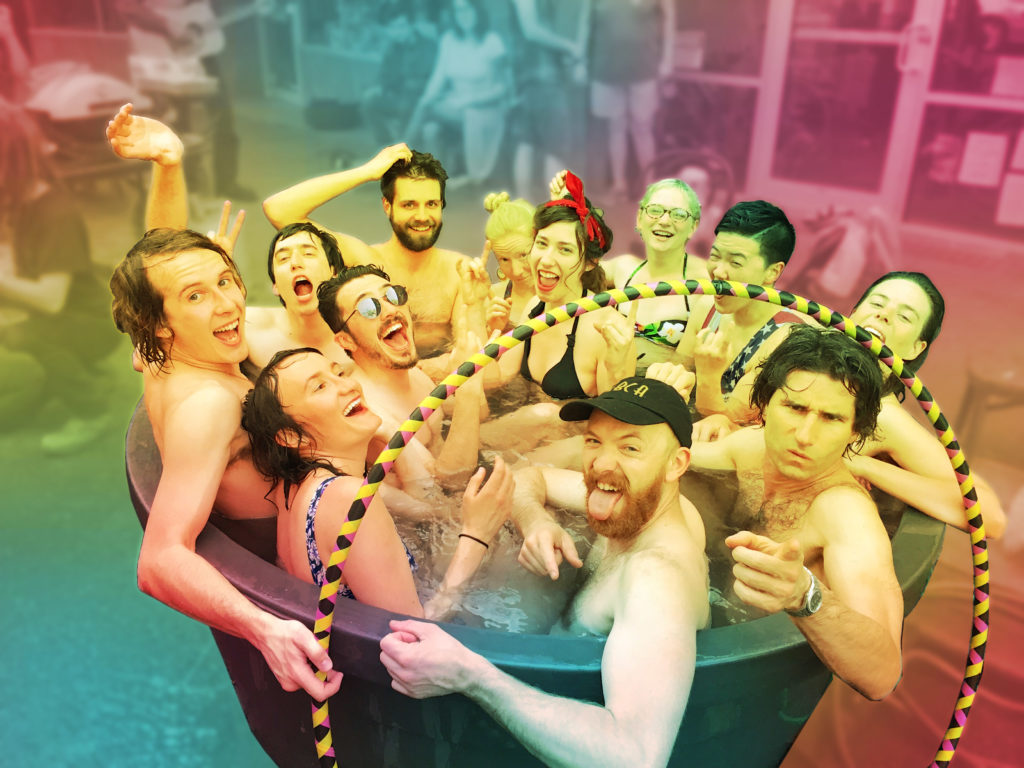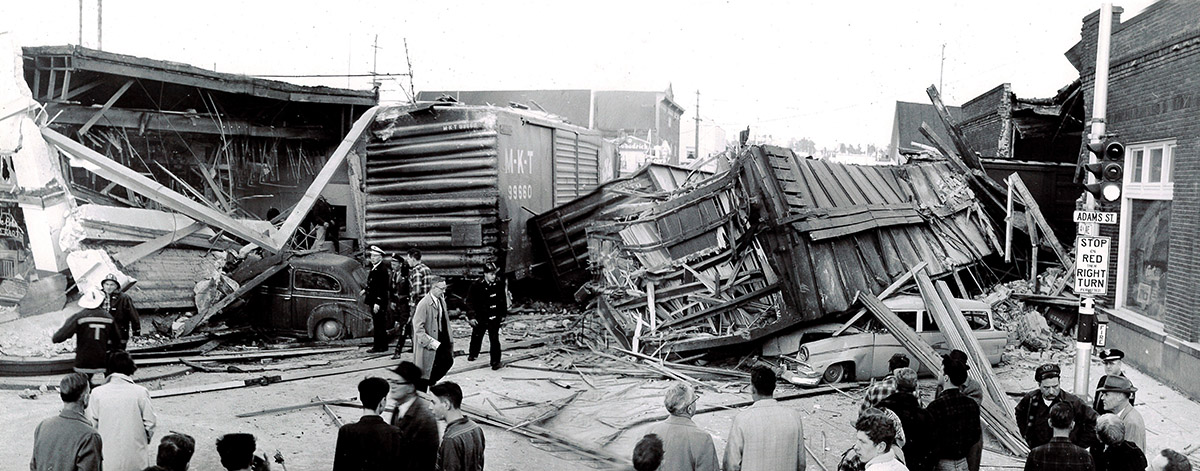HIGH-QUALITY LOCALLY MADE ORGANIC RADIO FROM THE PACIFIC NORTHWEST
Our Story


About Olympia
Above the sea, it hasn’t been a smooth ride. During the last 2.6 million years, the Cordilleran Ice Sheet—a million square miles of mile high ice—made dozens of passes over the Pacific Northwest. The last time Cordilleran backed up, about 20,000 years ago, it carved out the Puget Sound. What’s most peculiar about these repeating scrapes with big ice is how each time, the furthest southern point, the place where the ice wall inexplicably stopped, was Olympia.
What force prevented the ice from plowing south into Oregon and California? This remains one of geology’s greatest unsolved mysteries. Today, a Baskin-Robbins on the corner of Custer and Capitol marks the spot where the massive glacier stopped. Theories range from salt in the soil to the effects of the sun. A folk legend tells of an anti-ice spell cast by the last Mima mammoth. Some say that spell still lingers, explaining Olympia’s high standing in national barista and roller derby competitions.
One thing’s for sure, whatever stopped the giant glaciers didn’t stop a rampage of terrifying white people. By the middle of the 19th Century, thousands of indigenous people were being hunted or moved to internment camps to make way for forts, fences, streetlights and strip malls. And, when the first settlers ran out of arms-reach natives, they turned on each other.
White-on-white violence dates back to 1846 when Olympia had a white population of two. It was Levi Smith and Edmund Sylvester, Olympia’s original odd couple. The two divided the city 50/50 and were getting along just fine. Fine, that is, until ‘48 when Smith had a “canoe accident” and “drowned” and Sylvester “got” all his land. Over the subsequent decades, Sylvester generously gave large tracts to his new “friends” as he named, platted and effectively created the city we have today.
This kind of suspicious generosity continues. Olympia is home to a large population of over-educated creative Caucasians offering bounties of difficult to gauge satires and ample helpings of passive aggression.
There are countless natural wonders in these 19.69 square miles. You’ll find rolling hills, bubbling artesian springs and beaches of gravel, sand and mud. Best of all, this stuff is never far. Roughly eight percent of Olympia is a city-owned public park. In these several thousand acres, rich and poor freely smell the sweet perfume of flowers, listen to the wind rustling through the trees, and feel the gentle caress of tides, rivers and lakes.
Olympia’s unnatural world is equally inspiring. Many don’t realize that the land of modern day downtown is manmade. Between 1909 and 1911, Olympia mayor P. H. Carlyon bucketed 2.3 million cubic yards of mud from the harbor to make a great stinking sandcastle. At the time, everyone promised to name his 29-block neighborhood “Carlyon’s Fill,” but the name never stuck, although it stunk. Carlyon died before it stopped stinking and before his ultimate dream came to be. He imagined Capitol Lake fifty years before it was created.
Today, the stateliness of Washington State’s Capital and its capitol are reflected in its reflection pool, uncuriously named Capitol Lake. The lake is a fitting flourish to the boob-bomb behemoth up on the hill. The western hemisphere’s largest all-masonry dome is made from 1,400 pieces of unreinforced sandstone and visible from some of the furthest points in Thurston County.
Before the dome was erected, and before Carlyon’s reshaping of downtown, the small peninsula that separated the east and west bay of Budd Inlet appeared from high ground to resemble the profile of a bear and may be why the earliest names used by Lushootseed natives included TuxustcE’ltûd (a phrase that means “land of the bear”). Today, to the north, another bear profile shape, perhaps the mother bear, is made by the larger peninsula that extends from Priest Point (the bear’s paw) to Boston Harbor (the bear’s nose).
Perhaps a better name for the city today would be Land of the Drink. Olympia somehow sustains a whopping eighty-three financially solvent bars. Forty-one of these are downtown. How can a city with a population under 50,000 sustain that many bars? No one can explain this mind-boggling feat, nor can they explain how Olympia is able to sustain over forty tattoo shops, thirty-one Asian food restaurants, and fifty-eight banks. Yet somehow this all flows seamlessly in the dance that is the Olympia business scene.
Despite its prestige and fame, Olympia is small compared to other cities. In the State of Washington there are 23 cities bigger than Olympia. In the whole United States 749 are larger. Less than 3% of Olympia’s population lives in the area commonly referred to as the downtown core, which is why the majority of the people seen downtown are visitors.
Late night activity in downtown has been growing. Bars, restaurants, performance venues and late night places offer dress-up destinations. Following a trend that started roughly ten years ago, the downtown evening economy may soon be stronger than the daytime one.
Olympia is the home of Evergreen. In 1967 when the alternative college opened, the 1960s still hadn’t reached quiet Olympia where things were still very much like they had been in the 1950s. The cultural shift that Evergreen caused was seismic. Evergreen made Olympia a globally known counterculture hot spot. The college continues to draw strange people, many of whom have become permanent residents and have integrated into the Olympia establishment.
If Olympia was overly serious about itself before Evergreen, the effects of higher education intellectualism and privilege doubled it. What is the revolution being led by entitled white people? How do we make fun of this kind of social justice stereotype without punching down? Who knows? Maybe you can’t? When talking about Olympia’s counterculture always end your sentences with question marks? Question everything? Always?
For at least a hundred years, there have been people in Olympia who identified as anarchists, but in the last decade the number has skyrocketed. The term “anarchist” has meant different things to different people at different times. A study of the history of anarchism in Olympia would be helpful, but either they didn’t keep records or their records were lost, suppressed or destroyed. Presently the general defining trait of Olympia’s anarchists is a resistance to definition.
And, let’s not forget The Ramtha School of Enlightenment, by far Olympia’s greatest contradiction. To some, it’s the spiritual sanctuary they’ve searched for their whole lives. To others, it’s a humiliating implausible racist pile of shit.
There’s far more to get to.
Welcome to Olympia.
This is our radio company.




